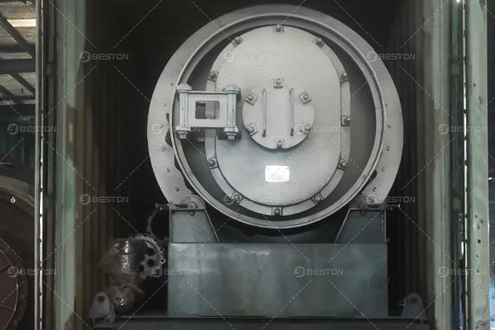The disposal of waste cable sheaths presents a significant environmental challenge. These sheaths, often composed of various plastics and metals, contribute to increasing waste volumes and environmental pollution. Pyrolysis recycling has emerged as a promising method to address this issue, offering several advantages over traditional disposal methods. This article explores the benefits of plastic pyrolysis for recycling waste cable sheaths.
Understanding Waste Cable Sheaths
Cable sheaths are protective coverings used to insulate and safeguard electrical cables. They are commonly made from a variety of plastics, such as polyvinyl chloride (PVC), polyethylene, and rubber compounds. Over time, these sheaths degrade or become obsolete, leading to the generation of waste.
The recycling of waste cable sheaths is essential due to their composite nature. Separating the plastic from the metal components can be labor-intensive and inefficient when using conventional recycling techniques. Pyrolysis recycling, however, offers a more streamlined approach by processing the entire sheath in a single operation.
The Pyrolysis Process
Pyrolysis involves the thermal decomposition of organic materials in the absence of oxygen. During this process, waste materials are subjected to high temperatures, causing them to break down into simpler substances. For plastic pyrolysis, the plastic to oil process typically occurs at temperatures between 300°C and 900°C.
The main byproducts of plastic pyrolysis are:
- Syngas: A mixture of hydrogen, carbon monoxide, and methane that can be used as a fuel or converted into other chemicals.
- Bio-oil: A liquid product containing various organic compounds that can be refined into fuels or chemicals.
- Char: A solid residue that can be used in various applications, such as soil enhancement or activated carbon production.
Advantages of Pyrolysis Recycling for Waste Cable Sheaths
1. Effective Material Recovery
Pyrolysis efficiently recovers valuable materials from waste cable sheaths. The process breaks down complex plastics into simpler hydrocarbons, which can be further refined into usable products. This includes extracting metals from the cables, which can be recovered and reused. Unlike traditional recycling methods, which may require extensive separation and preprocessing, pyrolysis handles the entire sheath in a single step.
2. Reduction of Environmental Impact
Plastic pyrolysis significantly reduces the environmental impact associated with waste cable sheaths. By converting plastic waste into valuable byproducts, pyrolysis minimizes the amount of waste that ends up in landfills or contributes to pollution. The process also reduces greenhouse gas emissions compared to incineration, making it a more environmentally friendly option.
3. Resource Efficiency
Pyrolysis contributes to resource efficiency by turning waste materials into useful products. Syngas generated from the process can be utilized as a renewable energy source, potentially replacing fossil fuels. Bio-oil can be processed into various chemicals and fuels, reducing the reliance on virgin raw materials. This efficient conversion of waste into resources supports the principles of a circular economy.
4. Energy Recovery
The pyrolysis process itself is energy-intensive, but it also offers significant energy recovery benefits. The syngas produced during pyrolysis can be used to generate electricity or heat, offsetting some of the energy requirements of the process. This aspect of pyrolysis makes it a more energy-efficient option compared to conventional disposal methods.

5. Minimized Landfill Use
One of the most significant benefits of plastic pyrolysis is the reduction in landfill use. Waste cable sheaths, when not properly managed, contribute to the growing problem of landfill overflow. Pyrolysis converts these waste materials into valuable byproducts, significantly reducing the volume of waste that needs to be disposed of in landfills.
6. Enhanced Waste Management
Pyrolysis improves waste management by providing a method for processing complex waste materials. Cable sheaths often contain a mix of plastics and metals, making traditional recycling challenging. Pyrolysis handles these composite materials effectively, streamlining the recycling process and reducing the need for extensive sorting and separation.
7. Support for Regulatory Compliance
As environmental regulations become more stringent, industries must find ways to comply with waste management standards. Pyrolysis provides a viable solution for meeting these regulations by offering an environmentally friendly method for disposing of and recycling waste cable sheaths. By adopting pyrolysis machinery, companies can demonstrate their commitment to sustainable practices and regulatory compliance.
Conclusion
The recycling of waste cable sheaths through plastic pyrolysis offers numerous advantages over traditional disposal methods. By efficiently recovering valuable materials, reducing environmental impact, and supporting resource efficiency, pyrolysis presents a promising solution for managing cable sheath waste. Its ability to process complex materials and generate useful byproducts makes it a valuable tool in advancing sustainable waste management practices. As the demand for effective recycling solutions continues to grow, plastic pyrolysis stands out as a critical technology for addressing the challenges of waste cable sheath disposal.

Comments
No comments yet. Be the first to react!